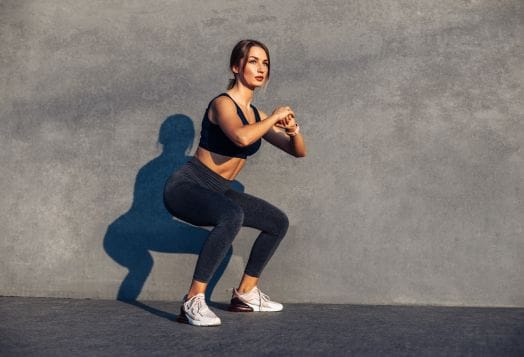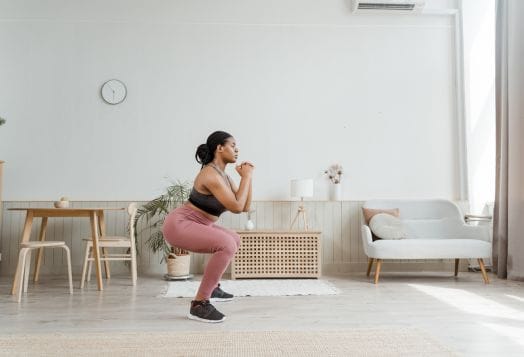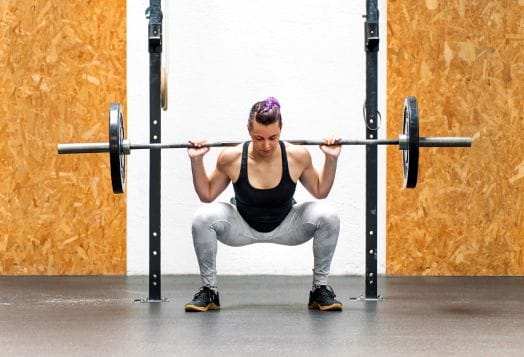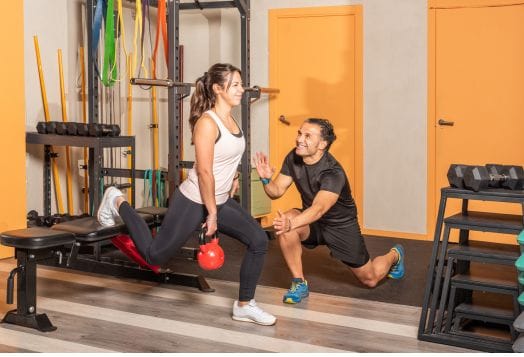Ever feel like your squats are more ‘wobble and wish’ than ‘power and precision’? The squat is one of the most powerful lower-body exercises out there, but only if you’re doing it right. This guide is your no-nonsense (but totally fun) path to mastering the squat exercise, with expert-approved variations, form tips, and game-changing techniques for building strength safely.
Why Squat Form Matters
Let’s start with the why. You wouldn’t build a house on wobbly bricks, so why squat on shaky knees?
1. Injury Prevention
Proper squat technique reduces unnecessary strain on your knees, hips, and lower back. A misaligned squat isn’t just uncomfortable, it’s a fast track to the physio. According to many physical therapists, proper squat form prevents injuries as it allows your joints to track naturally, distributing force evenly.
2. Muscle Activation
How squat form improves muscle activation lies in the details: aligned knees, flat feet, and engaged core. With correct technique, your glutes, quads, and hammies all pitch in like a dream team of lower body exercises.
3. Functional Strength
Squats are the blueprint for everyday moves like sitting, standing, and lifting your weekly shopping haul. Mastering form builds functional movement patterns that make life outside the gym a breeze.
The Best Squat Exercises for Every Fitness Level
Whether you’re fresh off the sofa or a seasoned gym-goer, there’s a squat exercise for you. Mix these different types of squats for muscle growth into your routine and watch your strength soar.
1. Bodyweight Squat
The foundation of all lower body workouts. This simple yet mighty move helps you master the proper squat technique without any weights.

How to do it:
Stand with feet shoulder-width apart, toes slightly turned out.
Keep your chest up and core engaged.
Lower your body as if sitting in an invisible chair, until your thighs are parallel to the floor (or as far as your mobility allows).
Push through your heels to return to standing.
Do three sets of 12-15 reps
2. Goblet Squat
Goblet squats build core stability while allowing you to train depth and balance. This variation is excellent for reinforcing posture and core strength.

How to do it:
Hold a dumbbell or kettlebell vertically against your chest.
Keep elbows tucked in and chest tall.
Lower into a squat, keeping your back straight and knees in line with your toes.
Push up through your heels to return to start.
Do three sets of 10-12 reps.
3. Barbell Back Squat
The king of strength training exercises. This beast builds serious power, but only if your squat form is spot-on.

How to do it:
Place a barbell across your upper traps (not your neck).
Grip the bar tightly and keep your elbows pointing down.
Brace your core and lower into a squat, maintaining a neutral spine throughout.
Drive back up through your heels to stand tall.
Do three sets of 6-8 reps
4. Sumo Squat
With your feet placed further apart, the sumo squat puts more emphasis on your inner thighs and glutes. Great for variety in your squat training plan.

How to do it:
Stand with feet wider than shoulder-width and toes turned out at about 45°.
Lower down, keeping your back upright and knees tracking over your toes.
Squeeze your glutes at the top as you stand up.
Do three sets of 10-12 reps
5. Bulgarian Split Squat
The Bulgarian split squat is a single-leg exercise that builds unilateral strength, corrects imbalances, and develops muscle activation.

How to do it:
Stand a few feet in front of a bench.
Place one foot behind you on the bench, top of foot down.
Lower your back knee toward the floor while keeping the front knee aligned.
Push through the front heel to rise back up.
Do three sets of 8-10 reps per leg
Pro Tips for the Perfect Squat Form
Even the best of us need reminders. These expert-backed tips will elevate your squat technique from shaky to solid and help you understand how to squat properly.
1. Knee Alignment
Keep those knees tracking your toes, no cave-ins. This keeps your form strong and joints safe. Proper squat alignment is a must.
2. Depth Control
Thighs parallel to the ground are the sweet spot. Can’t go that low? Work within your mobility. Quality beats ego every time.
3. Spinal Position
Keep your spine neutral, no hunching or over-arching. Keep it level. One of the most important squat form tips is to prevent aches and injuries.
4. Core Engagement
Brace like you’re about to get tickled. Tight abs = more balance and power. That’s core stability at its finest.
5. Foot Placement
Go shoulder-width apart, with toes slightly out. It’s your power base, so find what feels steady.
6. Breathing Technique
Inhale on the way down, exhale on the way up. Helps with stability and focus.
Sample Squat Workout Routine to Try Today
Now that you’ve got the know-how, here’s a squat-focused routine that delivers results without wrecking your week.
Warm-Up (5 mins)
Dynamic stretches like leg swings, hip openers, and a few bodyweight squats. Get your joints and muscles prepped for action.
Main Set
Bodyweight Squat - 3x15 reps
Goblet Squat - 3x12 reps
Sumo Squat - 3x10 reps
Bulgarian Split Squat - 2x8 reps per leg
Cool-Down (5 mins)
Hamstring and quad stretches. Hold each for 30 seconds. Recovery is key.
Tip: Do this squat workout routine for beginners 2-3 times per week with 48 hours of rest between sessions.
Make Every Rep Count
Nailing your form is the secret to unlocking real progress, not just in the gym, but in everyday movement. With consistent practice and attention to squat techniques, you’ll build strength, improve mobility, and train smarter.
Every squat exercise is a chance to refine your control, boost confidence, and level up your performance. The key? Patience, good form, and a little grit.
Disclaimer: The information provided is intended for general informational purposes only. It is not a substitute for professional advice or guidance. For personalised recommendations or specific concerns, please consult a certified professional.




